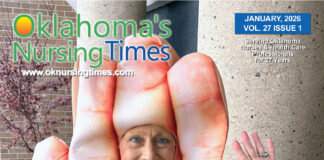
by Erica Carbajal
“Quiet quitting” is a phrase employers have become familiar with over the past year. The workplace trend of committing to no more than the minimum expectations for a role and reducing enthusiasm at work has implications for any industry, but the stakes are especially high in healthcare, where patients’ safety could be at risk.
Findings from a Gallup survey shared in September suggested at least half of the U.S. workforce fit the “quiet quitter” description. “Bare minimum Mondays” is another trend that has gained traction on social media in recent months. It is difficult to find concrete data on how these trends might be showing up in healthcare. Some might assume high nurse burnout rates amid ongoing staffing shortages could correlate to more nurses leaning into these workplace trends. However, nurses say the reality is quite the opposite.
“I don’t believe from the data that we’ve seen that nurses are doing the bare minimum,” Katie Boston-Leary, PhD, RN, director of nursing programs for the American Nurses Association, told Becker’s. “As a matter of fact, our data indicates that nurses struggle with the fact that they couldn’t do more for a patient.”
In a survey last year, making a difference in people’s lives was the top-selected response when nurses were asked about the most rewarding aspect of the job. With other tasks routinely getting in the way of nurses’ ability to do that, not only are they consistently working beyond their scheduled hours to provide adequate care for patients, they’re also taking home the stress of pondering the barriers that may have prevented them from going above and beyond for patients, Dr. Boston-Leary said.
One area where nurses are pulling back is with time off, combating longstanding pressure to respond to calls for help on their days off. A recent survey said 59 percent of nurses are regularly asked to cover additional shifts and nearly the same proportion say they frequently work beyond their shifts to complete work and care for patients.
“Over the past decade, it’s been about, even if you’re off, being able to respond to the calls if you’re [asked] to come in and help your team,” Dr. Boston-Leary said. “Nurses are saying ‘no more.’ They’re not answering their phones. They’re saying, ‘My time off is my time off.’”
Despite challenges the industry is facing, Los Angeles-based Cedars-Sinai has maintained high engagement among its nursing staff, according to David Marshall, DNP, RN, the organization’s senior vice president and chief nursing executive.
“We use Glint for our employee engagement surveys, and we’ve outperformed the Glint benchmark for all industries in the last several surveys that we’ve done,” he told Becker’s.
Dr. Marshall credited this to investments in nurses’ professional development, strong interpersonal relationships between nursing staff and other clinicians, and a culture that embraces innovation.
“[We] have an accelerator program that brings in startup companies every year, and they get to talk to our clinical staff about how their products could be improved,” he said.
Several innovations that give nurses a bit of time back in their day to spend with patients have come through the accelerator program, including Moxi robots and Alexa at the bedside. Over the past two years, Cedars-Sinai has expanded Alexa at the bedside beyond the pilot program, with most patient rooms outside of intensive care units now equipped with the technology. It has saved nurses time by helping them understand what a patient needs if they use the call bell, for example, before sending someone to respond.
“The patient can say, ‘Alexa, let the nurse know I’m in pain,’ or ‘let them know I need the TV changed,’ so we can send different people in response to those questions,” Dr. Marshall said.
These efforts do not go unnoticed by nursing staff.
“The innovation culture is palpable, and everybody sees these things as things we are doing to be a little more respectful of their time and make sure that we respond,” Dr. Marshall said
Any efforts hospitals can make to reduce nurses’ time spent running errands or being tied to their computers is worth the while, especially for engagement, Dr. Boston-Leary said.
“They want to take care of their patients. They want to be able to do proper assessments. They want to be able to do education — build a relationship with their patients and get to know more about them,” she said. “And that’s where we restore some of the joy in nursing — if we start looking at some of the systems that we built that aren’t working for us.”
As published here:
https://www.beckershospitalreview.com/












